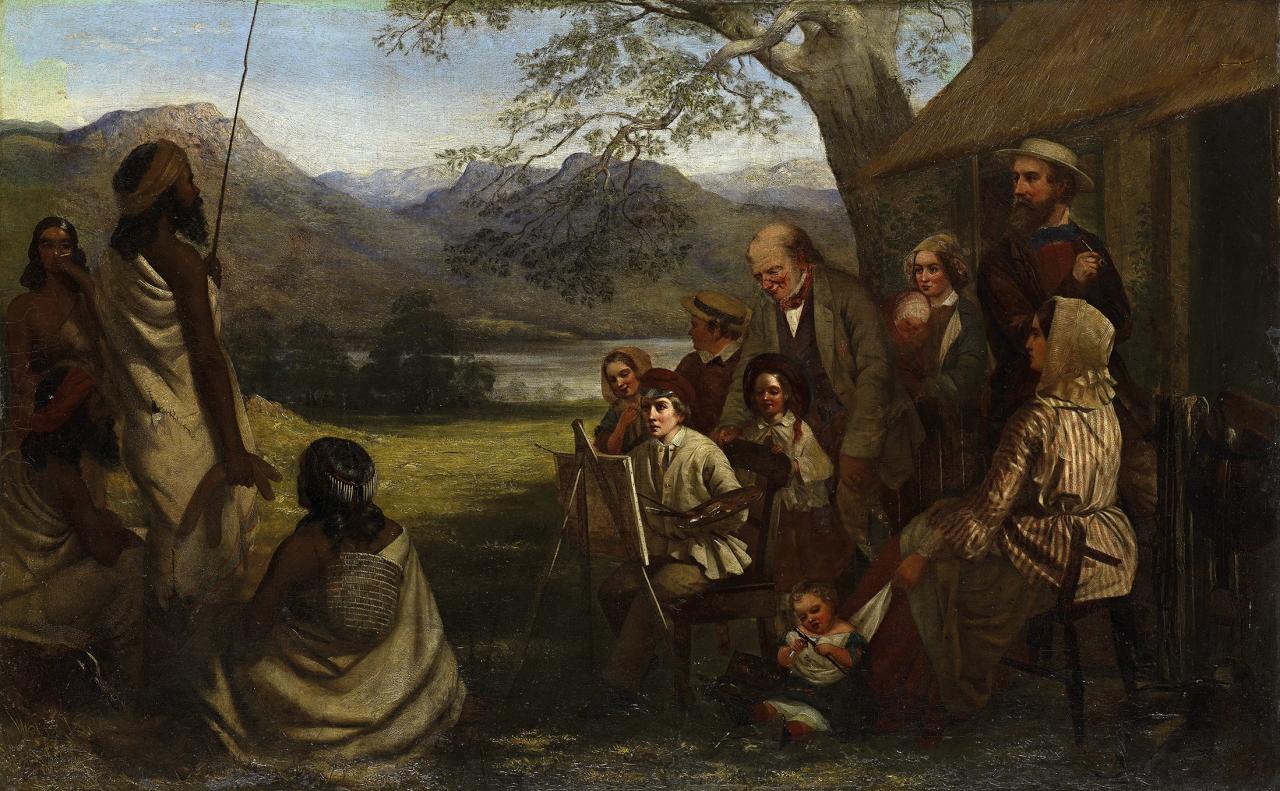Australian artists used European, mostly British, techniques and themes for the majority of the nineteenth century. However, in the 1880s and 1890s, the so-called Heidelberg school (named after the location outside Melbourne where they frequently painted) began to express uniquely Australian subject matter, generally the landscape, in their Plein-air or open-air canvases, and Australian art began to develop its own identity. You can buy Australian art at the many art galleries in Australia.
This fascination with the Australian landscape lasted into the early twentieth century when Australia was cautious to embrace avant-garde European trends such as Cubism and Surrealism. Painters like Sir Russell Drysdale and Sir Sidney Nolan were lured to the Outback’s breathtaking remoteness after WWII. Nolan is well known for his classic paintings of Ned Kelly, the infamous 19th-century bushranger (bandit).
Painter Fred Williams rose to prominence in the 1960s for his complex, almost abstract portrayals of the Australian countryside. While painters who focused on Australian subjects gained the most acclaim in their home country, others followed foreign avant-garde styles such as Pop art, conceptual art, and postmodernism.
Many Aboriginal communities make money by selling handcrafted art to visitors and an ever-expanding art market, an economic issue that has been difficult to reconcile given the spiritual and ancestral significance that the artists place on their work. The boomerang is perhaps the most well-known Aboriginal handcraft, on which artisans frequently paint or carve motifs based on indigenous mythology or traditions, with the Dreaming being a typical theme.
Albert Namatjira
Albert Namatjira (1902-1959) was one of Australia’s greatest artists and one of the most well-known Aboriginal painters. He combined traditional colour mixing with Western-style landscapes, gaining him notoriety and Australian citizenship for the first time in a time when Aboriginal people had few rights. The Hermannsburg School of Aboriginal painting arose from Namatjira’s beautifully detailed watercolours of the Australian outback.
His early paintings shared the same spiritual connection to the earth as more traditional Aboriginal art, and he depicted his love of trees in meticulously produced portrait-like paintings. Sadly, Namatjira’s career and life were crushed by the tragedy of racial injustice.
Tom Roberts
Tom Roberts, an English immigrant, painted the bush in the 1880s, concentrating on the lives of the average Australians and the victory of pioneers over nature. Shearing the Rams is one of Roberts’ most famous paintings, portraying Australia’s first export company and an important part of rural life. A Break-Away, considered a landmark of Australian art, shows a period of drought in the early days of the pastoral business that lasted into the 1890s.
Frederick McCubbin
The first well-known Australian-born artist was Frederick McCubbin. His impressionistic technique was the most impressionistic of the Heidelberg group, and his long friendship with Tom Roberts influenced him immensely. His most famous picture, Lost, was inspired by the finding of 12-year-old Clara Crosbie after getting three weeks lost in the bush. Unlike Roberts and Streeton, McCubbin focused on the darker side of Australia’s relationship with the landscape, depicting the pioneer as beaten by the bush.
Conclusion
Today, Australian landscape painting retains its exceptional richness and colour, and it is well-received worldwide. Modern technology is being used by contemporary Indigenous Australian artists to create intensely expressive work, and pioneering artists like Ken Knight are utilising art to change perceptions of the country. Mel Brigg explores increasingly significant subjects such as forced immigration and finding a place in this world of hybrid influences, drawing inspiration from indigenous mysticism. The prominent work of Australian landscape artists investigates themes, reveals societal change concerns, expresses emotion, and represents the viewpoints of the people who inhabit this territory. You can buy Australian art from these artists in all Australian galleries. So, this article discussed Australia and its relation with art.












